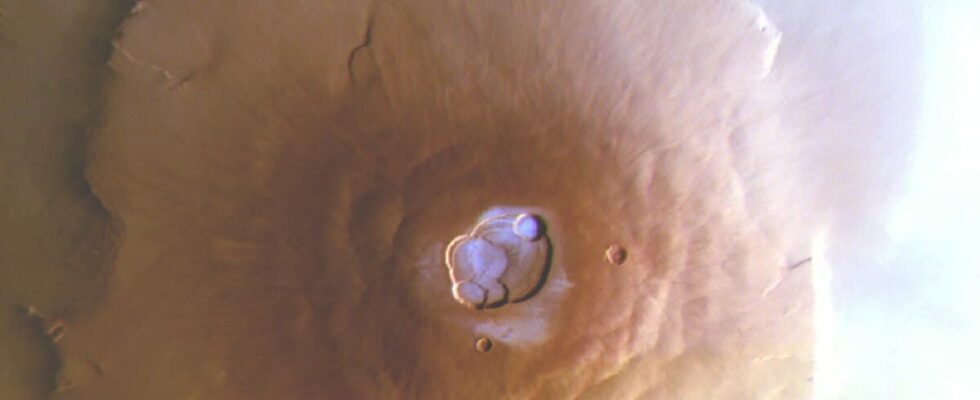Two European Space Agency probes sent into orbit around Mars have made an important discovery for our understanding of the Red Planet.
“Frosted volcanoes discovered in the tropics of Mars”. This is the title of the press release published by the European Space Agency (Esa) to report a discovery that is as surprising as it is crucial. Crossed data from the ExoMars TGO and Mars Express probes revealed the presence of frost at the top of the Tharsis volcanoes, the highest volcanoes in the solar system, which are located in the equator region of Mars.
Tharsis volcanoes where frost has been observed are: Olympus Mons, Arsia Mons, Ascraeus Mons and Ceraunius Tholus. At their summits they have calderas, large cavities dug by magma chambers emptied during past eruptions. Frost forms thanks to a unique microclimate in these calderas. Winds travel up the slopes of volcanoes, bringing relatively moist air from the surface to higher altitudes. This air condenses and settles as frost in the shaded regions of calderas, where temperatures are colder.
The frost patches are only present for a few hours at dawn before evaporating in the sunlight. Scientists think they are probably very thin, about a hundredth of a millimeter thick. However, the estimated quantity of water is colossal: around 150,000 tonnes which move between the surface and the atmosphere every day. This is the equivalent of 60 Olympic swimming pools, estimates ESA.

“We thought it was impossible for frost to form around Mars’ equator, because the mixture of sunlight and thin atmosphere maintains relatively high temperatures both on the surface and on mountain tops – unlike what we see on Earth, where you would expect to see frozen peaks,” explains Adomas Valantinas, lead author of the article published in Nature Geoscience.
How come this transient frost has not been discovered before? First, the observation required an orbit to survey an area early in the morning. Only the Mars Express and TGO probes have such orbits, while orbiters from other agencies are synchronized with the Sun and can only observe in the afternoon. Second, frost formation is linked to the coldest Martian seasons, which reduces the observation window. It turns out that the discovery was made by chance, with the researchers initially studying another track near the equator.
The discovery of this frost has implications for understanding Mars’ complex atmospheric dynamics and how water moves between the Red Planet’s reservoirs. This knowledge is essential for future exploration of Mars and the search for signs of life. The fact that this was a chance discovery suggests that there may be other unexpected places on Mars where water is present.
